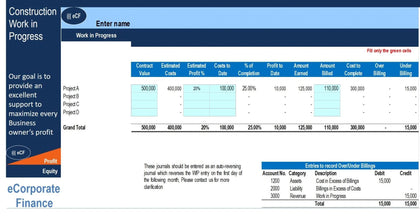Bike Shop Startup Financial Model
If you love biking, or just want to invest / raise a small fund to start your own brick and mortar bike shop, this financial model will assist with the financial forecasting, cash flow planning, and expected returns. The model is driven from bottom-up assumptions and include:
1. Four primary product categories.
2. Each category has up to five slots.
3. Each slot defines their own start month for maximum strategy and planning / accuracy.
4. Each slot also defines their own starting monthly sales, monthly growth per year, price per unit (over 5 years), and average markup.
The purchase of inventory can be defined as the months in advance that inventory is purchased for. That input is configurable and will be accounted for in cash flow. COGS (cost of goods sold) will be added back and the actual inventory purchase will be subtracted in the month of purchase. Also, dynamic logic for shipping costs and freight are based on a sliding scale schedule based on the total units purchased and the total freight cost at up to six different levels of volume ordering.
There is also a separate section to define five repair / service revenue streams. Those have a defined start month and a monthly expected repair / service count per month over 5 years and the average ticket value.
This model does not account for seasonality, but rather focuses on having monthly growth. For a startup of this nature, it was prioritized to be more important to show an increase in sales over time from startup to stabilization rather than assume some annual figure and a percentage of that populated into each month.
Operating expenses are defined by their description, start month, and monthly cost per year. One-time startup costs (outside of inventory) and capex also have their own schedule.
Final output reports include:
1. Monthly and annual pro forma detail (shows the granularity of all assumptions in detail down to EBITDA / cash flow).
2. Executive Summary (annual key financial line items and cash flow along with visualizations of Revenue and EBITDA per year. Also includes IRR, ROI, and Equity Multiple.
3. DCF Analysis (for both investor if applicable and owner as well as the project as a whole).
4. General key performance visualizations of sales by product category type / cash flow / revenues.
The user can account for some of the initial investment requirement to be funded by traditional debt as well as a potential exit month with a terminal value driven by a multiple of trailing 12-month EBITDA.
If you love biking, or just want to invest / raise a small fund to start your own brick and mortar bike shop, this financial model will assist with the financial forecasting, cash flow planning, and expected returns. The model is driven from bottom-up assumptions and include:
1. Four primary product categories.
2. Each category has up to five slots.
3. Each slot defines their own start month for maximum strategy and planning / accuracy.
4. Each slot also defines their own starting monthly sales, monthly growth per year, price per unit (over 5 years), and average markup.
The purchase of inventory can be defined as the months in advance that inventory is purchased for. That input is configurable and will be accounted for in cash flow. COGS (cost of goods sold) will be added back and the actual inventory purchase will be subtracted in the month of purchase. Also, dynamic logic for shipping costs and freight are based on a sliding scale schedule based on the total units purchased and the total freight cost at up to six different levels of volume ordering.
There is also a separate section to define five repair / service revenue streams. Those have a defined start month and a monthly expected repair / service count per month over 5 years and the average ticket value.
This model does not account for seasonality, but rather focuses on having monthly growth. For a startup of this nature, it was prioritized to be more important to show an increase in sales over time from startup to stabilization rather than assume some annual figure and a percentage of that populated into each month.
Operating expenses are defined by their description, start month, and monthly cost per year. One-time startup costs (outside of inventory) and capex also have their own schedule.
Final output reports include:
1. Monthly and annual pro forma detail (shows the granularity of all assumptions in detail down to EBITDA / cash flow).
2. Executive Summary (annual key financial line items and cash flow along with visualizations of Revenue and EBITDA per year. Also includes IRR, ROI, and Equity Multiple.
3. DCF Analysis (for both investor if applicable and owner as well as the project as a whole).
4. General key performance visualizations of sales by product category type / cash flow / revenues.
The user can account for some of the initial investment requirement to be funded by traditional debt as well as a potential exit month with a terminal value driven by a multiple of trailing 12-month EBITDA.













































